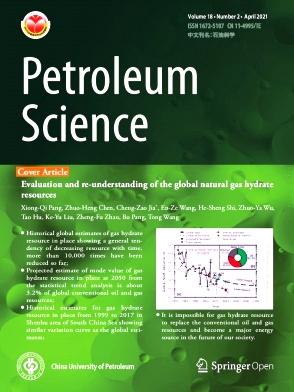Adsorption and retention of fracturing fluid and its impact on gas transport in tight sandstone with different clay minerals
IF 6
1区 工程技术
Q2 ENERGY & FUELS
引用次数: 0
Abstract
To elucidate the adsorption characteristics and retention mechanisms of fracturing fluids in diverse clay minerals, we conducted on-line nuclear magnetic resonance (NMR) and atomic force microscopy (AFM) experiments. The depth and extent of solid phase damage are determined by the ratio between the size of fine fractions in fracturing fluid residue and the pore-throat size in experiments. Poor physical properties (K < 0.5 mD) result in a more preferential flow pathway effect during flowback, and the stepwise incremental pressure differential proves to be more effective for the discharge of fracturing fluid in submicron pore throats. The permeability is significantly influenced by the differential distribution of retained fracturing fluid, as supported by direct experimental evidence. The presence of good physical properties (K > 0.5 mD) combined with a scattered distribution of retained fracturing fluid is associated with high gas phase recovery permeability, whereas a continuous sheet-like distribution results in low recovery permeability. The expansive surface area and presence of filamentous illite minerals facilitate the multiple winding and adsorption of fracturing fluids, demonstrating strong hydrogen-bonding, multi-layering and multiple adsorption properties. The geological characteristics of the main gas formations exhibit significant variation, and the severity of damage caused by fracturing fluids occurs in diverse sequences. To address this issue, a differentiated strategy for optimizing fracturing fluids has been proposed.
求助全文
约1分钟内获得全文
求助全文
来源期刊

Petroleum Science
地学-地球化学与地球物理
CiteScore
7.70
自引率
16.10%
发文量
311
审稿时长
63 days
期刊介绍:
Petroleum Science is the only English journal in China on petroleum science and technology that is intended for professionals engaged in petroleum science research and technical applications all over the world, as well as the managerial personnel of oil companies. It covers petroleum geology, petroleum geophysics, petroleum engineering, petrochemistry & chemical engineering, petroleum mechanics, and economic management. It aims to introduce the latest results in oil industry research in China, promote cooperation in petroleum science research between China and the rest of the world, and build a bridge for scientific communication between China and the world.
 求助内容:
求助内容: 应助结果提醒方式:
应助结果提醒方式:


